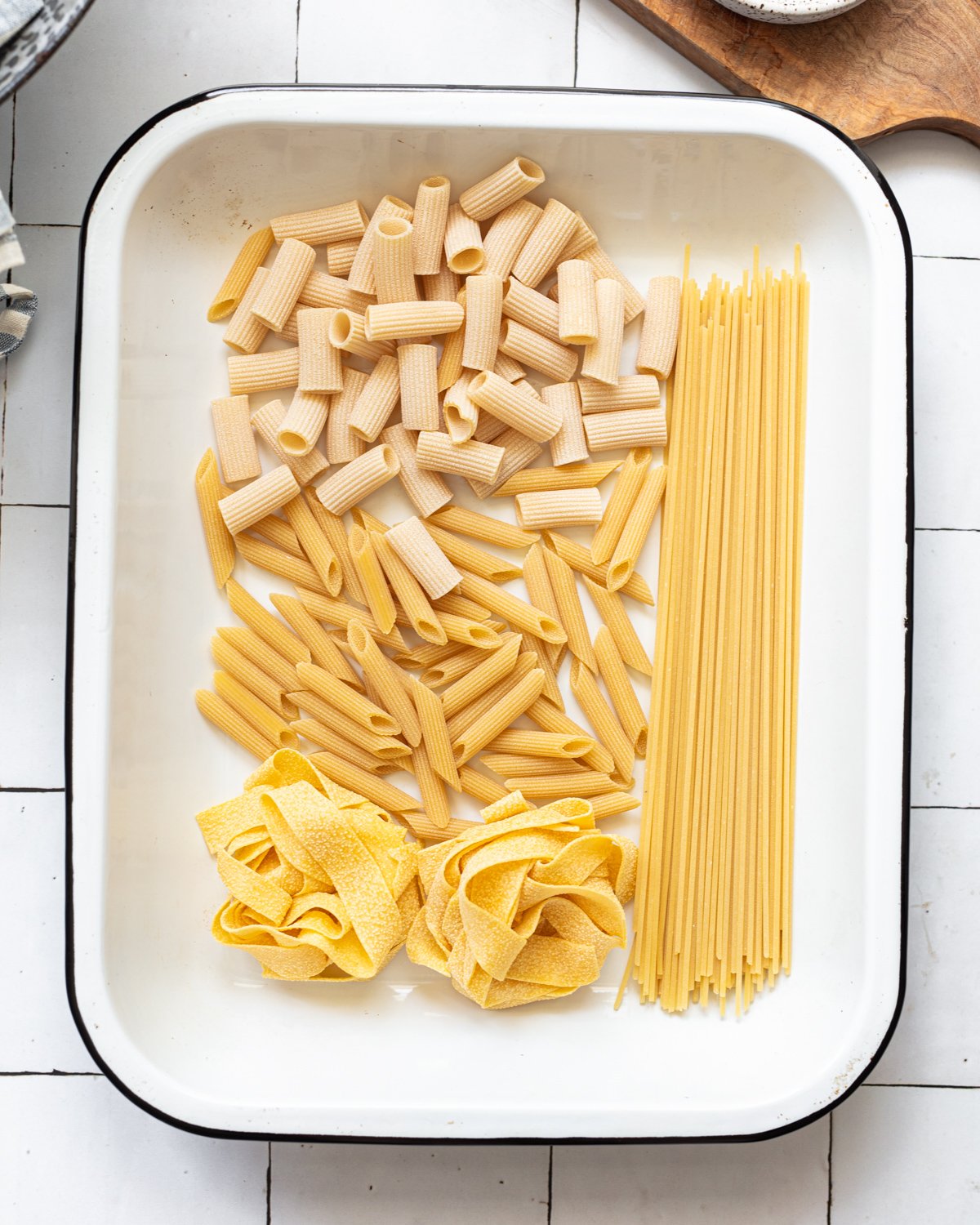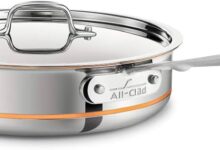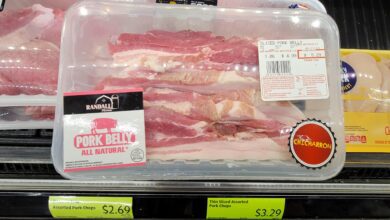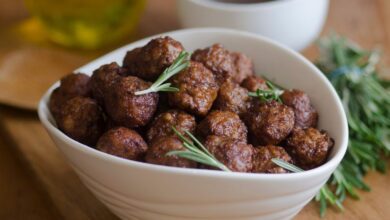Al Dente Pasta Cooking Time : Master the Art of Perfectly Cooked Pasta
Al dente pasta should be cooked for 8-10 minutes for optimal texture and taste. Pasta, a beloved staple in kitchens around the world, comes in many shapes and sizes.
Whether you’re serving up a comforting bowl of spaghetti Bolognese or tossing together a vibrant pasta salad, getting the cooking time just right is crucial for achieving that perfect al dente consistency. Al dente, meaning “to the tooth” in Italian, refers to pasta that is cooked just enough to retain a firm bite.
Overcooking pasta can result in a mushy and unappealing texture, while undercooking can leave it too tough to chew. In order to achieve the ideal al dente texture, pasta should be cooked for approximately 8-10 minutes, depending on the type and thickness of the noodles. This brief cooking time ensures that the pasta is cooked through, yet still firm to the bite. So, how do you achieve that ideal al dente pasta every time? Let’s delve into the secrets of perfect pasta cooking.
Why Is Al Dente Pasta Important?
cooking pasta al dente is crucial for achieving the perfect texture and bite. When pasta is cooked al dente, it means “to the tooth” in Italian. It is cooked until it is firm but still offers a slight resistance when bitten into.
Retaining the texture and bite of pasta is important because it enhances the overall dining experience. Al dente pasta has a more pleasing mouthfeel compared to overcooked pasta, which can be mushy and lack texture.
Furthermore, cooking pasta al dente enhances the flavors of the dish. The slightly firm texture allows the pasta to better hold on to sauces and ingredients, resulting in a more flavorful bite.
On the other hand, overcooked pasta becomes soggy and can lose flavor as the starch starts to break down. By cooking it al dente, you ensure that the pasta maintains its flavor and integrity.
Avoiding mushy pasta is another reason why cooking al dente is important. Overcooked pasta not only loses its texture and flavor, but it can also become messy and clump together.
So, when cooking pasta, be sure to follow the recommended cooking time and taste it throughout the process to achieve the perfect al dente texture. Your taste buds will thank you for it!
Determining Al Dente Pasta Doneness
Al Dente Pasta Cooking Time
Determining Al Dente Pasta Doneness
Visual cues:
- Check for a firm texture with a slight resistance when biting into the pasta.
- Look for a center that is just cooked with no rawness.
- Notice a slight white line running through the center of the pasta.
Sensory evaluation:
- Smell the pasta to determine if it has a cooked aroma.
- Touch the pasta to feel if it is firm yet yielding.
- Listen for an audible sound when chewing to indicate the right doneness.
Tasting techniques:
- Take a small bite to evaluate the texture and doneness.
- Try different cooking times to discover your preferred level of doneness.
- Experiment with various types of pasta to identify the ideal al dente texture.
Tips For Perfect Al Dente Pasta
Choosing the right pasta shape is essential for achieving the perfect al dente texture. Different pasta shapes have varying cooking times, so be sure to select one that suits your dish. Shorter pastas, like penne or fusilli, cook quicker than longer ones, such as spaghetti or linguine.
To determine the ideal cooking time, start by checking the package instructions. However, keep in mind that these are just guidelines. It’s important to taste the pasta during the cooking process to gauge its doneness. Al dente pasta should be firm to the bite with a slight resistance in the center.
Once the pasta is cooked to your liking, reserve a cup of pasta water before draining. This starchy liquid can be used to adjust the consistency of your sauce and help it adhere better to the pasta.
Remember, perfecting the art of cooking al dente pasta takes practice. Experiment with different shapes, cooking times, and tasting the pasta along the way to achieve the desired texture every time.
Factors Affecting Pasta Cooking Time
There are several factors that can affect the cooking time of al dente pasta. First, the type of pasta plays a significant role. Different pasta shapes and sizes require different cooking times, as some may take longer to cook while others may cook more quickly.
Another factor that can affect pasta cooking time is the altitude at which you are cooking. Higher altitudes have lower air pressure, which can affect the boiling point of water. In these circumstances, pasta may take slightly longer to cook.
The size and shape of the pan you use to cook pasta can also impact cooking time. A wider and more shallow pan may allow for faster evaporation of water, resulting in shorter cooking times. Conversely, a narrower and deeper pan may trap more heat and moisture, requiring longer cooking times for the pasta.
Lastly, the temperature of the water used to cook pasta can affect cooking time. Using cold or lukewarm water will require more time for the water to come to a boil, leading to longer cooking times for the pasta.
Adjusting Cooking Time For Different Pasta Types
Adjusting the cooking time is crucial for achieving the perfect al dente texture for different pasta types.
| Pasta Type | Cooking Time |
|---|---|
| Long pasta (e.g., spaghetti, linguine) | 8-12 minutes |
| Short pasta (e.g., penne, fusilli) | 10-12 minutes |
| Fresh pasta | 2-4 minutes |
| Whole wheat pasta | 8-10 minutes |
| Gluten-free pasta | 9-11 minutes |
For long pasta such as spaghetti and linguine, cook for 8-12 minutes until it reaches the desired firmness. Short pasta like penne and fusilli should be cooked for 10-12 minutes for best results. Fresh pasta, which contains more moisture, requires a shorter cooking time of 2-4 minutes. Whole wheat pasta typically takes 8-10 minutes to cook to an al dente consistency, while gluten-free pasta may need 9-11 minutes. These cooking times are general guidelines, so be sure to check for doneness by tasting a piece before draining the pasta.
Tricks To Speed Up Or Slow Down Cooking Time
When cooking pasta, the cooking time plays a crucial role in achieving the perfect texture. However, there are tricks that can help you either speed up or slow down the cooking time to suit your preference.
Pre-soaking pasta: Pre-soaking the pasta in warm water for about 10-15 minutes before cooking can reduce the cooking time. This helps soften the pasta, allowing it to cook faster.
Using a pressure cooker: Pressure cookers can significantly reduce the cooking time of pasta. The increased pressure and temperature inside the cooker accelerate the cooking process, resulting in faster cooking times compared to traditional methods.
Utilizing salted or unsalted water: Salted water tends to boil at a higher temperature, effectively reducing the cooking time of the pasta. Conversely, using unsalted water can slow down the cooking process, resulting in a longer cooking time.
Increasing or reducing heat intensity: Adjusting the heat intensity can also impact the cooking time. Higher heat intensities can speed up the process, while lower heat intensities can slow it down.
Common Pasta Cooking Mistakes To Avoid
One of the most important factors in cooking pasta is getting the cooking time just right. However, there are several common mistakes that people often make when cooking pasta. Overcooking pasta can result in a mushy texture and a loss of flavor. It is important to follow the recommended cooking time on the package and test the pasta for doneness by biting into it or cutting it in half. On the other hand, undercooking pasta can leave it tough and chewy. Properly cooked pasta should be al dente, which means it is firm to the bite but still cooked through.
Another mistake to avoid is adding oil to the boiling water. Contrary to popular belief, this does not prevent the pasta from sticking together. Instead, it can create a slippery surface on the pasta, making it difficult for the sauce to adhere to the noodles. Additionally, neglecting to stir the pasta while it is cooking can lead to clumps and uneven cooking. Stirring the pasta helps prevent it from sticking together and ensures that it cooks evenly.
Credit: familystylefood.com
Testing Al Dente Pasta Doneness Without Tasting
Testing Al Dente Pasta Doneness without Tasting
One popular method for testing al dente pasta doneness is throwing spaghetti against a wall. This age-old technique involves taking a strand of cooked pasta and giving it a gentle flick towards a vertical surface. If the pasta sticks to the wall, it is considered done. However, this method can be messy and may not always give accurate results.
Another method is flicking a strand of pasta against a kitchen cabinet or countertop. If the pasta strand falls to the floor without sticking, it is considered undercooked. If it sticks and remains upright, it is overcooked. Ideally, the pasta should bounce back slightly when flicked and then fall gracefully.
For vegetarian pasta, the doneness test can be slightly different. You can check the firmness of the pasta by breaking a strand in half. If there is a small white dot in the center, it means it is still undercooked. If the white dot is barely visible or not there at all, the pasta is al dente.
Al Dente Pasta Usage In Various Recipes
Al dente pasta is a crucial element in various delicious recipes. Whether you are preparing a classic spaghetti carbonara, a creamy garlic Parmesan pasta, a lemon butter shrimp pasta, a pesto pasta with roasted vegetables, or a tomato basil pasta with fresh mozzarella, achieving the perfect al dente texture is essential.
Al dente pasta refers to pasta that is cooked until it is firm to the bite. It should have a slight resistance when chewed while still being tender. Overcooking can result in a mushy and unappetizing dish, while undercooking can leave the pasta tough and raw-tasting.
To achieve the ideal al dente texture, follow the cooking time recommended on the pasta package. Start testing the pasta a minute or two before the suggested time. Keep in mind that the cooking time can vary depending on the type and brand of pasta. As soon as the pasta is cooked al dente, drain it immediately and rinse it with cold water to stop the cooking process.
By mastering the art of cooking al dente pasta, you can elevate your recipes and create delicious meals that will impress your guests.
Frequently Asked Questions On Al Dente Pasta Cooking Time
How Long Does It Take To Cook Al Dente Pasta?
Al dente pasta typically takes around 8 to 10 minutes to cook, but it depends on the type of pasta. It should have a slight firmness when bitten.
Why Is Al Dente Pasta Preferred?
Al dente pasta is preferred because it has a better texture and flavor. It is not mushy and retains some bite. It also has a lower glycemic index, making it a healthier option.
What Is The Secret To Cooking Perfect Al Dente Pasta?
The secret to cooking perfect al dente pasta lies in timing and testing. Follow the cooking instructions on the package, then taste a small piece a minute or two before the recommended time. It should be firm but not hard in the center.
Can You Cook Pasta Longer Than Al Dente?
Yes, you can cook pasta longer than al dente if you prefer a softer texture. However, be careful not to overcook it as it can become mushy. Taste it periodically to achieve the desired texture.
Conclusion
So, next time you cook pasta, remember that finding the perfect al dente texture is key. By following the cooking time guidelines and testing the pasta for doneness, you can achieve a deliciously firm and chewy texture that enhances the overall taste of your dish.
Experiment with different cooking times to find your preferred level of doneness and enjoy a perfectly cooked al dente pasta every time. Happy cooking!








